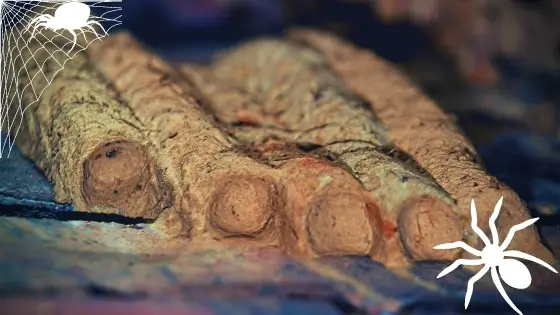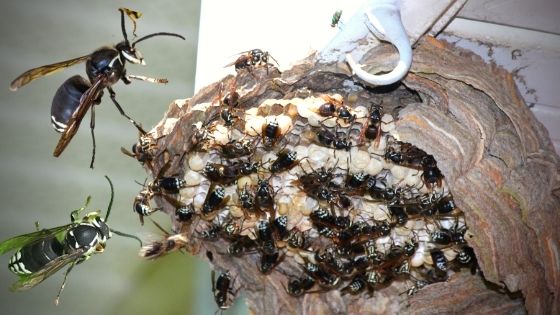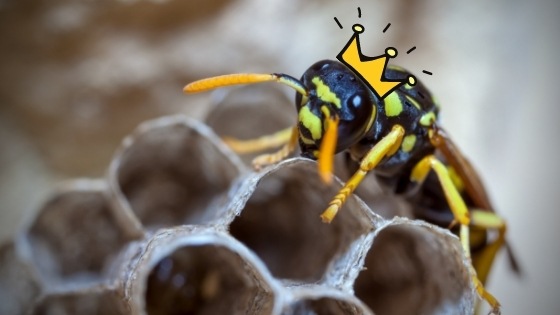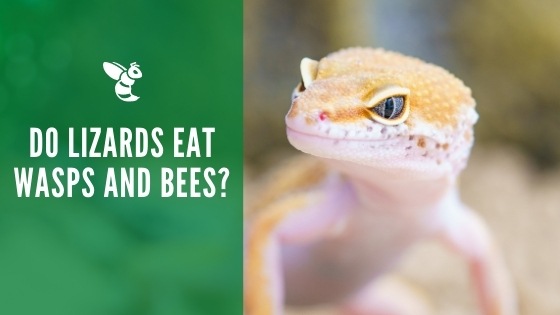What do Mud Dauber Wasps Eat?

While we know that wasps like to hover around sugary foods and anything else that’s sitting on our plate while we try to picnic outside, a wasp’s diet varies quite a bit. What may appeal to one species of wasp isn’t something that another species prefers. What do mud dauber wasps eat? Let’s find out what their diet looks like.
The Typical Wasp Life Cycle and Diet
When a wasp is a larvae, they will be fed small bits of insects that have been killed and chewed up by the adult wasps. Once the larvae grows into a mature adult wasp, the diet changes. Adults usually like to feed on sugars that they find in nectar. They love aphid honeydew. The wasps that you see, trying to nibble on your food are social wasps.
The most common species of social wasps is the yellow jacket variety. This is different from the parasitic wasps that are most common in the U.S. The parasitic wasps will be busy laying their eggs inside of other insects. They don’t come around humans very much.
What do Mud Dauber Wasps Eat?
The mud dauber wasp very frequently captures spiders in the U.S., but It’s not necessarily the process you think would occur when spiders are caught. When a mud dauber wasp sees a spider, it will sting it to paralyze it. The corpse is then placed within a cell in their home nest. Once the cell is filled with spiders, the female mud dauber will deposit an egg and seal off the cell will mud. The mud dauber larvae will then hatch from the egg and feed on the spiders inside.
While other wasps can eat just about anything that they want to, they can process meat, dairy, vegetables, and much more. If they’re really hungry, you may find that they’re getting aggressive to access your food. Adult mud dauber wasps typically only feed on the body fluids found within spiders and rarely get aggressive.
Are Mud Dauber Wasps Beneficial?
Mud dauber wasps are generally considered harmless and do not defend their nests the same way that social wasps do (yellow jackets and hornets). If you have a fear of spiders, you can view mud dauber wasps as being beneficial. Mud daubers can fill each cell of their nest with over 25 spiders and often prey on poisonous spiders, such as black widows.
Dangerous and aggressive wasp species can sometimes take over mud dauber nests; this is when you should be concerned.
Controlling a Mud Dauber Wasp Population
If aggressive wasps have taken over a mud dauber wasp’s nest, plan on spending a little time in the evening keeping a lookout for their nest. In the evening, when the sun begins to go down, wasps will head back to their nest for the night. If you have a nest nearby, you should see some wasps flocking to a specific area.
The nest may be concealed somewhere, but this is an excellent way to track them down. When you know that many of the wasps have entered the nest and activity has calmed down outside of it, this is when you can spray the nest or attempt to remove it. Just be sure that you’re careful. Wear clothing to protect yourself, and make sure you have an exit plan in place.
Wasps are a vital part of our ecosystem. They control our insect population. You’ve likely seen at least a few wasps around your property at one time or another. There’s nothing wrong with this as long as they’re not becoming aggressive or building a large number of nests. If you’re looking to prevent them, try to figure out what’s attracting them in the first place. Once you get rid of their source of food, they’ll move on to another spot where they can easily find their next meal.
If you have spotted a large nest on your property, you may want to consider calling a professional over for an estimate. This is the safest way to get rid of wasps without putting yourself in harm’s way.



